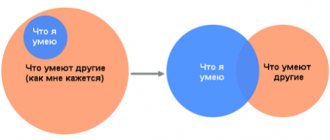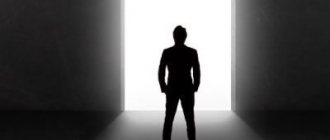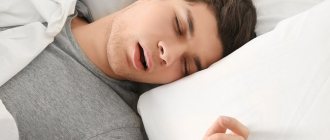ALECTOROPHOBIA, ALLIUMPHOBIA, FOAM ON MILK, BOILED ONIONS AND OTHER GASTRONOMIC PHOBIAS - AND HOW TO LIVE WITH THEM
Every day, restaurant kitchens receive requests to remove onions, cilantro, oil from a dish, or, for example, to do without the octopus in an octopus salad. In most cases this is due to allergies, in a few cases it is due to the fact that the sight of tentacles splayed out in a plate will provoke a panic attack.
Fear of certain products is nothing more than the human fear of destruction of one’s body, which is directly related to the instinct of self-preservation. For example, children aged 2–3 years often refuse to eat unfamiliar foods, because the body protects itself from poisoning by unknown ingredients. In adulthood, fear of food - sitophobia - occurs either with intolerance to certain foods and neurological diseases, when one sight or smell of a product is unbearable, or with mental disorders. A person hears voices forbidding him to eat, for example, asparagus, or believes that food is poisoned, thinks that he has no throat or his stomach, for example, is made of glass, and is unable to digest food. Less dramatic cases of fear occur with people who are suspicious, anxious, often pedantic, hyper-responsible, or prone to perfectionism.
You can easily live your whole life with a gastronomic phobia if it doesn’t bother you too much - no one has ever died from giving up the hated semolina porridge. If this causes inconvenience, then you can get rid of the fear of food with the help of a neurologist or psychotherapist, who themselves admit that they have always hated and will continue to hate foamed milk.
Fear of contaminated foods
If you fry the meat well, the fear of contracting salmonellosis from chicken will be unfounded: just 10 minutes at a temperature of 75°C is enough.
Regular news about salmonella, listeria, staphylococcus, E. coli, bird and swine flu viruses and other microscopic evil spirits found in food makes people suspicious completely give up poultry, pork and beef, chicken eggs and unpasteurized milk - these are the foods that most often cause panic. Hypochondriacs especially often suffer from bacillophobia: having heard about another virus, they immediately find all the symptoms of the disease and decide that they have definitely eaten a contaminated product. The inability to check the origin and quality of products forces people to either refuse to eat altogether or ask to exclude potentially dangerous products from a dish - for example, restaurants often ask not to add raw eggs if they are part of the ingredients of the dish or its sauce.
Fear of perishable foods
Bacteria multiply more quickly in custard and in oil-based creams and whipped cream;
slower - in whipped egg whites. Fear of food poisoning from perishable foods, like other gastronomic phobias, is based on the instinct of self-preservation and fear of harming one’s own body. It reaches epidemic proportions in the summer - the only time when the line in the culinary department in supermarkets finally clears up. Salads (sauces and dressings become a favorable environment for rapid growth of bacteria), dairy products and confectionery products are at risk: distrust of the seller’s information about the date of manufacture (“just arrived today”) and the manufacturer (a suspicious-looking sticker that can be peeled off, but then attach a new one) turns the cream on cakes and pastries into an object of ostracism. Many people admit that they are afraid of perishable foods, regardless of seasonal climate changes.
Fear of swallowing food and breathing while eating (phagophobia)
Irina, good afternoon.
After Skype, I promised to give some explanations and recommendations on what you can do when you experience anxiety attacks, fears before and during meals, as well as anxiety states that are associated with these fears.
I asked if there was any incident in your childhood when you choked. Since your fear and possible disorder, which you identified as phagophobia, are exclusively of mental origin, and the causes almost always go back to childhood. That is, most likely you either choked while swallowing, so much so that there was a feeling of suffocation, or you were sick and experienced similar sensations that you yourself describe - during bronchitis you woke up from suffocation. Because of such situations, the fear of swallowing and choking on food arises and is reinforced.
You also talked about panic attacks, that before every meal, every sip, you have to tune in and hold your breath. Do these panic attacks and anxiety only occur in connection with food intake and illness?
1 You also said that now, slowly, your condition is leveling out and you have started eating. This is a positive point, since they themselves, intuitively, found a way out. Plus my recommendation is to “swallow a little at a time, with a very short breath-hold and while exhaling). Remember this, if the situation repeats, take this positive experience with you and use it.
2 One of the consequences of these fears is weight loss, since when you are in the acute phase, you exclude numerous foods from your diet.
Even on the most difficult days, you must try to maintain a balance of nutrients and vitamins. You can drink water, so have a supply of water-soluble additives.
3 Who to contact if you decide to work with a phobia on your own, without psychotherapy. A speech therapist can help you cope with swallowing problems. The specialist will give certain exercises and teach swallowing techniques that will prevent food and liquid from entering the lungs. After all, this is exactly what you are afraid of. This specialist will also have to be visited more than once, as swallowing techniques may change.
4 A few more practical recommendations that help.
I believe that you have already “figured them out” yourself, but nevertheless.
= You need to sit up straight while eating or drinking. Remain upright and do not lie down for another 30 minutes after eating.
= Eat and drink slowly.
= Try to concentrate on the process of chewing and swallowing food. Avoid distractions: conversations or TV (I believe that this recommendation must be followed, although clients report that, for example, when working on a computer, they do not pay attention to past anxiety and can chew and swallow freely. But only until remember their fear. Take this into account.)
= Food should be tasty, take small pieces of food and a small portion of liquid into the mouth.
= One of the important points is to make sure that there is no previous portion of food left in your mouth before taking a new one.
5 You both wrote and talked about how you experience fear, shame and panic that an attack might occur in public, because you are afraid that those around you will not be able to accept this “strange behavior.” If you don’t work with this, then over time it may become difficult to establish new social connections and work. As a result, depression, lack of desire to develop, and lack of interest in previously loved things are possible.
You and I have come to the same conclusion that such a disorder needs to be treated. Examinations by a neurologist and then work with a psychologist, therapist and endocrinologist (we both especially noted this specialist, since thyroid dysfunction can also be the cause of some of the symptoms that you described). Treatment of the disorder is necessary to restore normal functioning of the body and psyche.
6 Why is correction of the emotional state necessary? Fear - any fear - is simply a program that determines a reaction to some specific external stimulus. The program can be turned on or off. Is not it? Your subconscious has learned to turn on this program when there is a trigger specific to you. But turning it off, or rather not continuing to stimulate, is a no-no. Therapy is needed to get rid of anxieties and fears. You are required to be ready to work, desire and attitude to consciously take the path of your own changes and responsibility for these changes, in this case the therapy will be successful.
7 And in conclusion, two breathing relaxation exercises that I recommend to all clients without exception who are prone to panic attacks.
= This exercise can be done whenever you have 5 minutes free. Grounds well. Gives you the opportunity to feel your condition.
Sit in a quiet place, in a place where no one will disturb you, warning everyone that you are not to be disturbed.
Put your phone on silent and set a timer for 5 minutes.
Sit comfortably with your back straight and supported by the back of a high chair, confident and relaxed. That is, you should be in good shape, but not tense.
Place your hands on your hips so that you are comfortable.
Close your eyes.
Take a slow breath in through your nose, saying the word “inhale” to yourself and feeling the air pass through your nostrils. And then, exhale through your mouth, pursing your lips and saying the word “exhale” to yourself.
With each exhalation, relax all your muscles and let go of control - let the timer tell you when to finish - give it control of time.
After 5 minutes you get up and go about your business.
= The next exercise is called “square breathing”
Look around and find with your eyes a rectangular object: a picture, a window, a door, a drawing in an article on the screen of your monitor, and do the following.
1. Look to the upper left corner and inhale while counting to four.
2. Move your gaze to the upper right corner and hold your breath for a count of four.
3. Take your breath to the lower right corner and exhale for a count of four.
4. Move your gaze to the lower left corner and calmly say: “Relaxed and smiled.”
That's all.
By looking at a certain point, you get rid of the feelings that oppress you. Practicing mindful breathing allows you to gather yourself and return to the present moment.
Breathe in this way until you achieve results.
Initially, rate your anxiety level on a 10-point scale (You know when you feel good and when you feel uncomfortable). If you rate your adrenaline level higher or lower than desired, repeat the exercise until you move at least one unit towards improvement. Let's say your adrenaline level is 9, you're too stressed to concentrate. Just continue breathing in a square pattern until you reach 8, and then until you reach a number that is comfortable.
Use this technique whenever you need to quickly change your level of arousal. For example, when you feel that you are starting to worry that breakfast, lunch, meeting with friends, etc. is coming soon.
If there are no more questions, then I will ask you to close the consultation yourself.
Fear of smells, tastes, colors and textures of foods
Despite its truly disgusting appearance, liver is one of the record holders for beneficial properties among foods.
The shape, texture, color and smell can subconsciously evoke associations with a life-threatening product: you can remember the reaction of Indiana Jones when he was offered to taste monkey brains, or tourists wincing in disgust at the sight and smell of Southeast Asian delicacies. But oddly enough, the top most common fears include quite ordinary foods: fear and awe are inspired by the smell and taste of garlic (alliumphobia) and liver, tomatoes, broccoli, Brussels sprouts and other vegetables (lachanophobia). Often fear is caused by a specific taste - for example, sour (acerophobia) - or smell. Thus, some people associate the smell of cilantro with the smell of bedbugs. And others avoid peanut butter like the plague, with its sticky texture that can, you see, stick to the roof of your mouth and cause choking.
Fear of something that looks alive
Not all types of snails are edible; grape snails are considered the most delicious: they are baked with garlic butter and parsley or boiled in wine.
It is associated with the fear of causing pain to a living being - often behind it lies a ban on the manifestation of aggression, including in its positive form. People who, without blinking an eyelid, eat chicken fillet, chicken salad or chicken Kiev, feel cold at the sight of a whole baked chicken carcass. In the same group of fears is ostraconophobia, fear of shellfish (for example, escargot). Bird eggs, perceived as embryos, and caviar are also frightening - eating a tablespoon is equivalent to exterminating a small school of fish. For many, the thought that the swallowed creature is actually alive and will continue to live inside a person, destroying him from the inside, causes panic - and this phobia, again, is based on the instinct of self-preservation
How to get rid of the fear of cooking
It is possible to get rid of the fear of cooking on your own. To do this, you need to start preparing simple dishes, first for yourself, and then gradually expanding the circle of those you will treat. Then begin to gradually complicate the dishes. The main thing is to act within the limits of your comfort, do not rush.
You may be interested in: 42 gift ideas for children (except toys)
For example, start with sandwiches, then cook scrambled eggs, then cook pasta. After a while, try making a simple pasta sauce (you can start with simple cheese or ketchup, and then add more and more ingredients).
If you can’t cope with fear on your own, or you are not confident in your abilities, consult a psychologist. Under his supervision, you will get rid of magerocophobia and be able to live life to the fullest.
Fear of expired food
Factory canned food, contrary to popular belief, almost never causes botulism;
but at home - yes. The mere interest in the expiration date on the packaging and fears about its expiration, of course, do not fall under the definition of a phobia - until it turns into an obsession that the product is spoiled just a couple of hours after opening the vacuum packaging or that any canned product is spoiled , and the expiration dates indicated on the cans are a deliberate deception of the manufacturer selling expired goods. Some complain that they cannot drink juice from a package or eat dairy products if the packages were opened not by them personally, but, for example, by their loved ones. And that any drink that has been left in a glass at room temperature for at least ten minutes is no longer good.
Bulimia, fear of food.
Christina, hello! Eating disorders are a sore subject for many girls. It's great that you find the strength to heal on your own! Not every person could. And the fact that you wrote this letter speaks of the strength of your intention. It is worthy of respect! Let's look at the root of the problem. Fear of getting fat and rejection of your body. These are psychotraumas. These may be experiences in relationships with parents, and at an early age. The first psychotrauma is “rejection”, experienced with a parent of the same sex. Being rejected is a very deep trauma; the rejected one feels it as a rejection of his very essence, as a denial of his right to exist. Remember what words and events could have contributed to the feeling of being rejected? Parents' words and actions are often taken literally by the child. The fear of getting fat can be interpreted as “the fear that there will be more of me in this life, a lot.” This body does not want to take up much space, it takes on the image of one running away, slipping away, and throughout its life it strives to take up as little space as possible. Weight loss below normal and exhaustion is his attempt to disappear. Who rejected you? Think about it. The psyche will resist and not let you into these experiences again, where there is more resistance there is an answer. The psyche protects you, this is not a defense mechanism “don’t touch the wound, otherwise it will hurt again”
Another psychological trauma of people with ORPP is the trauma of abandonment. This is due to the relationship of the parent of the opposite sex. Remember if your father (or maybe your mother) left you. What feelings did you have? What did you decide at that moment?
Fear and anxiety before food is an alarm clock. And it has been ringing for a long time - 3 years and 4 months. It rings so you can hear it and heal yourself.
The wound can be covered with a bandage (this is nutritional control), or you can heal it and not be afraid to hurt it again and again. (this is to understand the mechanism of fear and psychotrauma)
Below I will give a small technique for coping with anxiety, try it again and again. Until you bring it to automaticity.
When you feel anxiety and fear again, imagine that it is leaving your body. It can be an image of anything. Imagine what color it is. What does it feel like? What does it look like?
Feelings control us as long as we are in them (or they are in us). And then after separation we are no longer together, but separately. Then begin to imagine how you are increasing and this image is decreasing. Until it fits in your palm. You have reduced your fear/anxiety and now you have her and not she you. You have the right to do whatever you want with her. You can even arrange for her to sit next to you and not interfere with your eating.
I recommend that you contact a specialist. Work through your psychological traumas. Food is not your enemy. The reason must be sought in your attitudes and thoughts. In your experience of grievances and other feelings.
Be healthy and take care of yourself.
Do not refuse the help of your loved ones and relatives. Help is good.
Rate the psychologist's answer:
Rating 5.00 (2 Votes)
Fear of foods associated with traumatic memories
Traumatized by the sight of semolina lumps in childhood, they only hate porridge, but often do not mind semolina in pancakes, soufflés, puddings and mousses.
Most gastronomic phobias are associated with childhood memories that had a negative emotional connotation, since the human brain instantly builds an associative chain with previously experienced pleasant or unpleasant situations. Therefore, the list of products in this group of fears resembles some kind of children's torture diet: milk foam, fish oil, ghee, porridge with lumps. Overeating a product in childhood and parents' attempts to force the child to eat something he doesn't like can also cause phobias in adulthood.
What to do after overeating?
Probably everyone is familiar with the state of internal discomfort when you promise yourself to eat less and control yourself, but you relax and eat more, despite the fact that you are “on proper nutrition” (as it is fashionable to say now). And after that, almost everyone asked themselves the question: “What to do after a glutton (uncontrollable gluttony) on a diet and how to eliminate the consequences? Maybe do an extra workout or a fasting day ?”
The answer is simple: score and move on with your life. Forget it and pick up where you left off - eat your next meal as planned and go to your scheduled workout.
The psychological state of those losing weight is a fragile and very important thing, much more significant than losing weight . Desperate methods seem to be some kind of perverted form of masochism:
1) If you do an extra workout or fast day because you overate, you probably feel like you did something bad and need to be punished. Thus, you will simply throw off your entire training and nutrition schedule.
2) If you want to work off calories or unload, then you obviously divide foods into bad and good, right and wrong, healthy and harmful. As a result, not only do you not enjoy eating them, but you also need someone’s permission to eat them, or experience pangs of conscience when you have already eaten them. There are no good or bad products . There are whole and minimally processed foods (cereals, vegetables, fruits, meat, fish, poultry, oils, nuts, vegetables), which should dominate the diet by 80-90%, and everything else - 10-20%.
3) If you arrange fasting days or additional workouts after overeating, then you are forming negative eating habits. By completely giving up “bad” foods, perceiving your own workouts as a duty, working off treats and arranging fasting days, you accumulate stress and obsessive thoughts, and this leads to new breakdowns.
So what to do after overeating?
1. Never mind, continue where you left off. Don't think about how much you ate and how to work it out during training. Just make your next meal the way it should be and go to your (not extra) workout.
2. If you want to do an additional activity, then do not forget to enjoy it.
3. Better yet, go for a walk to clear your head, add some activity, enjoy the fresh air, and not beat yourself up for overeating.
4. Forget forever that food can be “worked off” or “earned.” No rewards and no punishment with food. Stop training yourself!
Fear of raw and undercooked foods
Fish (even sea fish) can not only be infected with helminths, but also contain heavy metals like mercury in high concentrations.
Not only is there simply no culture of consuming raw meat or fish in Russia, but also due to the lack of high-quality products, the idea that raw or undercooked meat or fish is certainly loaded with parasites has been put off in the subconscious for years. Not with the rabies virus, but with a bovine tapeworm, not with a bovine tapeworm, but with a tapeworm. Panic fear of infection, suspiciousness and suggestibility, especially in people prone to hypochondria, lead to a fear of meat (carnophobia) and fish (ichthyophobia) as such. First on the list of fears are steaks of any roast, with the exception of well done, tartare and sushi. (author N. Gribulya, photographer S. Leontiev, www.eda.ru)
And how many of these phobias do you have on your plate? Do you have your own, exclusive ones?












